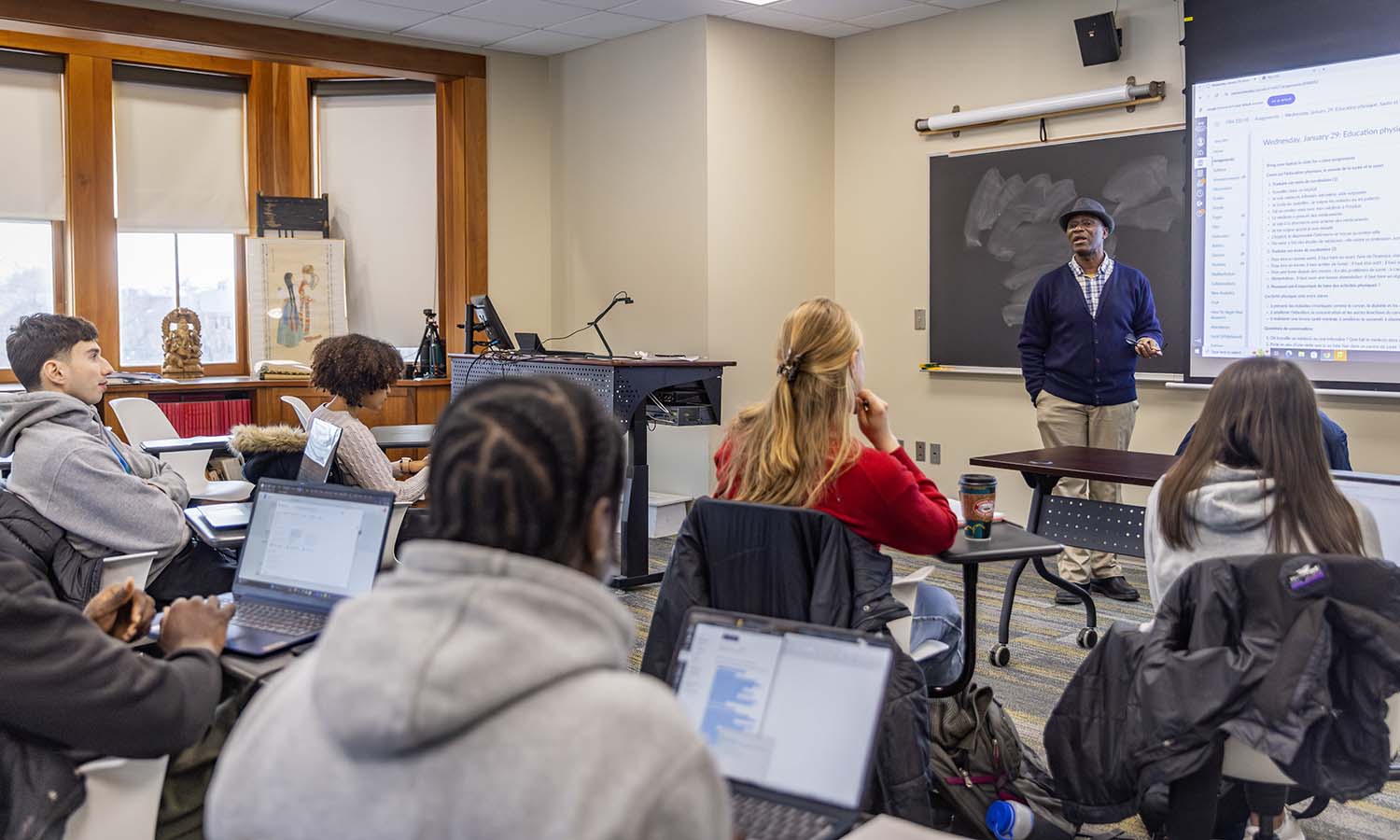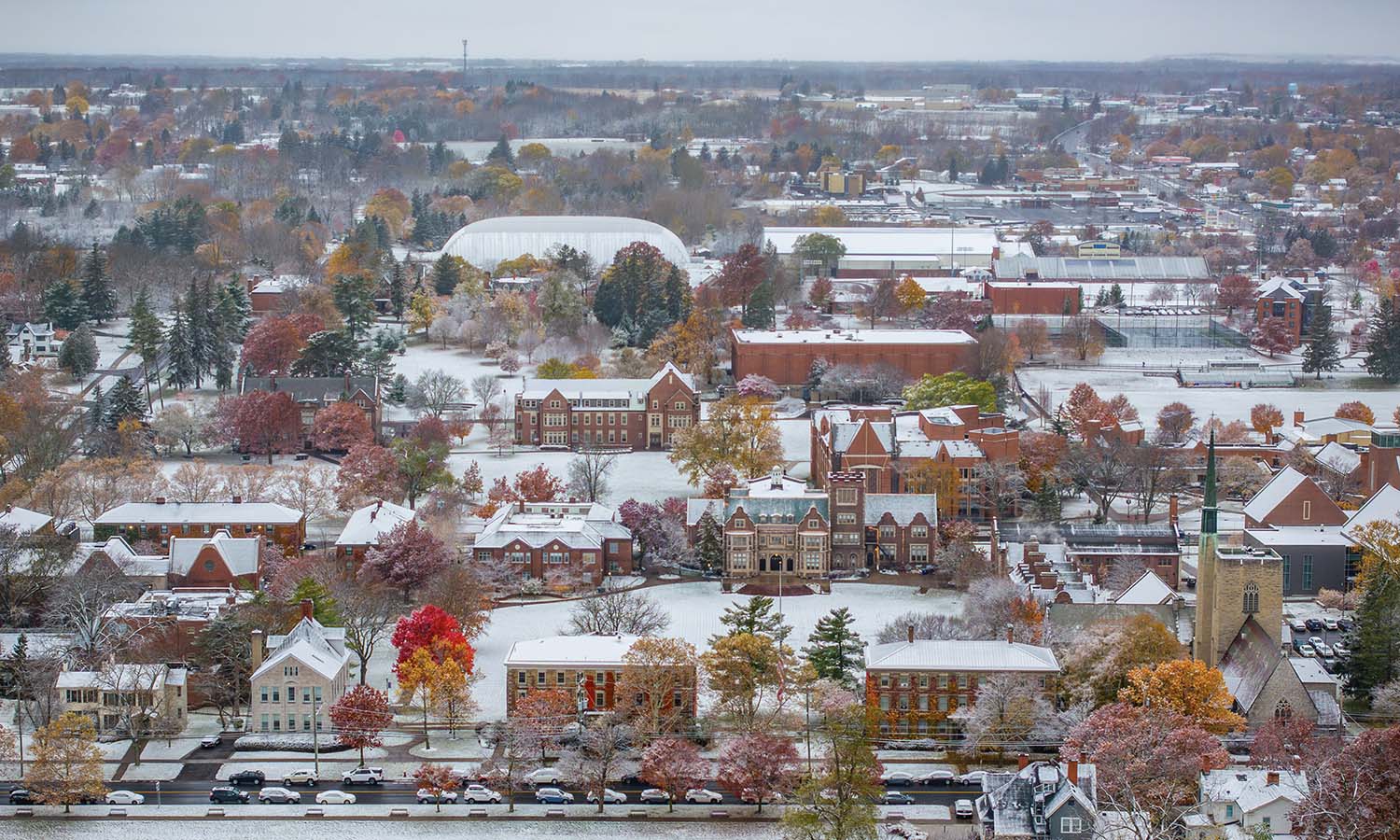
HWS News
31 July 2024 • Alums • Faculty • Research • STEM The Great Lakes Effect
HWS researchers study winter lake-effect patterns that impact the entire Great Lakes Region.
Research on lake-effect snowstorms over the Great Lakes has tended to focus on storms produced over one or two lakes, but an HWS-led research study is looking at the broader region.
This spring, Professor of Geoscience Neil Laird and Caitlin Crossett ’15, an assistant professor of atmospheric sciences at the University of North Carolina Asheville, published a study of lake-effect weather throughout the entire Great Lakes region from the late 1990s through the early part of this decade. This research is part of a three-year National Science Foundation-funded project to investigate several aspects of lake-effect snow in the Great Lakes.
In studying lake-effect weather throughout the entire Great Lakes region, Laird, Crossett and their coauthors, including Professor of Geoscience and Associate Provost Nick Metz, were able to shed light on the potentially greater impacts in different areas on a single winter day.
They found that “on days when lake-effect was active on all five of the Great Lakes there was a greater chance that lake-effect weather systems extended from one lake and continued over another lake, called lake-to-lake snow bands,” Laird explains. “Our group has found through past research that the occurrence of lake-to-lake snow bands result in an enhancement to the snowfall totals.”
As the current study observes, the large-scale weather pattern will set the stage for days with lake-effect over all five lakes in the Great Lakes region. Laird says that knowing the pattern “can help forecasters to identify when these widespread lake-effect days are likely to occur and be able to anticipate lake-to-lake snow bands in specific regions leading to enhanced snowfall.”
Other significant results detail the prevalence of lake-effect activity across the five lakes, the changes in favorable conditions for lake-effect storms over time and the likelihood of such conditions to linger during a given period:
- Nearly a third of all lake-effect snow bands that were observed across 25 cold seasons between 1997-98 and 2021-22 occurred during days when all five lakes had lake-effect activity simultaneously.
- The first portion of the 25 cold season (until 2008-09) had a greater number of days per cold season with lake-effect on all five lakes; subsequently, that figure decreased significantly, signifying a reduction in the frequency of favorable conditions for these types of lake-effect days.
- The days with lake-effect over all five lakes were found to occur on several consecutive days, meaning the widespread lake-effect remained entrenched in the entire Great Lakes region for multiple days.
The study, “Synoptic Conditions and Lake-to-Lake Connections for Days with Lake Effect on All of the Great Lakes,” was published in May in the Journal of Applied Meteorology and Climatology.
Laird joined the HWS faculty in 2001 and has maintained an active research program at HWS involving undergraduate students with funding from the National Science Foundation and the National Oceanic and Atmospheric Administration for projects that are collaborative with several research scientists and weather forecasters. His work has appeared in the Journal of Applied Meteorology and Climatology, the International Journal of Biometeorology, the International Journal of Climatology and Weather and Forecasting. He teaches courses that range from “Introduction to Meteorology,” “Climate Change Science,” to “Global Climates and Oceans,” and “Environmental Meteorology.” Laird holds a Bachelor of Science from the State University of New York at Oswego, and a Master of Science and doctorate from the University of Illinois at Urbana-Champaign.
Crossett joined the UNCA faculty in 2023. She previously served as a postdoctoral research associate in HWS’ Geoscience Department. As a student at HWS, Crossett graduated cum laude in Geoscience and conducted an Honors project with Professor Metz on the cold surges along the African highlands, which was published in the Journal of Applied Meteorology and Climatology. She was a recipient of the Donald L. Woodrow Prize in Geoscience and served as president of Geoscience Club. She holds a master’s in mathematical science from the University of Wisconsin-Milwaukee and a Ph.D. in civil and environmental engineering from the University of Vermont. Crossett’s research has been featured in the Journal of Applied Meteorology Climatology, Hydrological Processes and Climate.
Laird and Crossett published another article earlier this year in the International Journal of Climatology.



